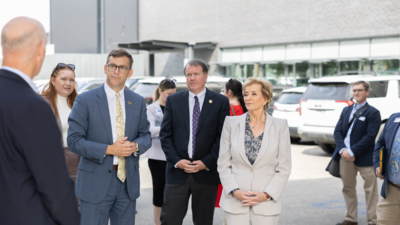ARTICLE AD BOX

Linda McMahon's Montana visit on her Returning Education to the States tour. (Image source: US Department of Education)
US Secretary of Education Linda McMahon visited Montana last week as part of her Returning Education to the States Tour, a nationwide effort to emphasise state-led education reforms.
Accompanied by Governor Greg Gianforte, McMahon toured Morning Star Elementary School in Bozeman, where she engaged with teachers and administrators about strategies to improve literacy. The visit highlighted Montana’s locally-driven programs designed to strengthen reading outcomes from early childhood through high school. These efforts are particularly significant in the US, where illiteracy has been strongly linked with challenges such as high dropout rates, welfare dependency, and incarceration.
Third grade literacy as a benchmark
At Morning Star Elementary, discussions centered on the importance of students achieving reading proficiency by third grade, widely recognised as a turning point in academic development.
Research indicates that children who fall behind in literacy by this stage are more likely to struggle in later grades and face limited career opportunities. Montana’s targeted interventions, including structured literacy instruction and teacher training, are designed to prevent these long-term setbacks.
Workforce development at the forefront
The Secretary’s tour also included visits to the Bozeman Agriculture Research and Teaching (BART) Farm and Montana State University. There, she and Governor Gianforte discussed how Montana is connecting classroom learning with workforce needs. With agriculture, technology, and research playing a critical role in the state’s economy, Montana is investing in programs that prepare students for future careers while strengthening ties between education and industry. “Montana is making important strides by implementing targeted programs that boost literacy and expanding workforce initiatives that prepare students for the jobs of tomorrow,” McMahon said, adding that state-led initiatives ensure solutions reflect local economic realities.
Governor Gianforte stresses local innovation
Montana Governor Gianforte emphasised that the state’s approach blends literacy reforms with teacher support and innovation. “In Montana, we’re focused on unlocking the brightest futures for our youngest minds by inspiring a love of reading, encouraging innovation in the classroom, and making historic investments for our teachers,” he said. He further noted the importance of collaboration with federal leadership to empower educators and parents in shaping student success.
National push for evidence-based reading instruction
Montana’s reforms are part of a larger national shift. Over the past five years, 40 states have passed legislation mandating evidence-based reading instruction, often emphasizing phonics and structured literacy methods. While implementation has faced challenges, these laws reflect growing consensus that early literacy interventions are essential for improving educational outcomes and workforce readiness. The emphasis on both literacy and workforce skills also aligns with wider federal goals of bridging the gap between education and employability—an area of increasing concern across the US.
Implications beyond Montana
McMahon’s visit demonstrates how localised approaches can serve as national models. Montana’s dual focus on literacy and workforce preparation addresses both immediate educational needs and long-term economic goals. For other states, the lesson is clear: policies that integrate early literacy support with workforce readiness initiatives may offer the most effective path to reducing inequalities and strengthening future generations.



.png)
.png)
.png)
















 1 hour ago
4
1 hour ago
4









 English (US) ·
English (US) ·